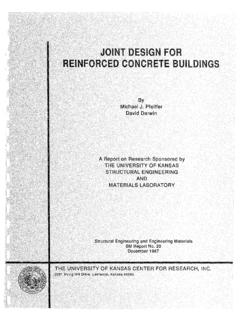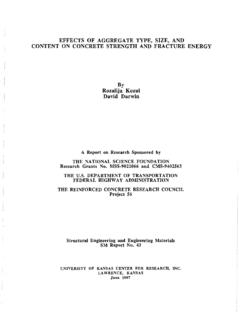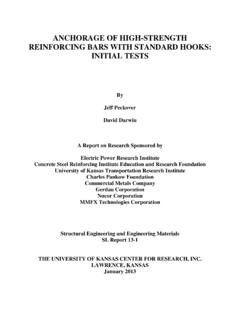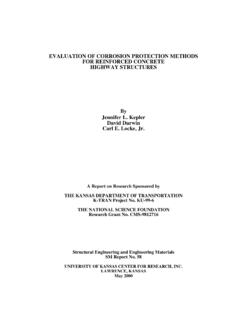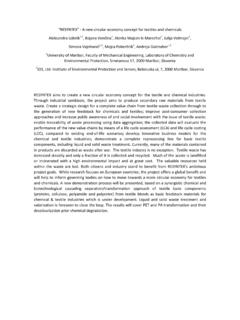Transcription of The Challenges of Economic Maturity: New England, 1880 ...
1 The Challenges of Economic Maturity: New England, 1880-1940 Joshua L. RosenbloomUniversity of Kansasand National Bureau of Economic ResearchNovember 23, 1998 Prepared for delivery at a conference at the Boston Federal Reserve Bank, October 2, 1998, andinclusion in Peter Temin (ed.), The Economic History of New England (tentative title). I amindebted to Louis Cain, Dora Costa, Price Fishback, Claudia Goldin, Morton Keller, NaomiLamoreaux, Marcus McCorison, Mary Rosenbloom, Steven Sass, Kenneth Snowden, PeterTemin, Tom Weiss, Gavin Wright, and Eugene White for their advice and 1880 the rapid growth of manufacturing industries in New England had created anurban and industrialized economy substantially different from the rest of the country.
2 If theyears before 1880 had been ones of divergence from the national pattern, however, the 60 yearsafter 1880 were ones of convergence. After the Civil War, the rapid expansion of rail andtelegraph networks gave birth to an increasingly unified national economy . As population andindustry spread into the interior of the country, the gap that had previously emerged betweenNew England and the rest of the nation narrowed. The erosion of the region s industrialleadership was especially pronounced in textiles, and boots and shoes the industries largelyresponsible for New England s early industrialization. By the 1950s, the region s relatively pooreconomic performance had become the subject of a growing literature seeking to identify thecauses of regional decline and offer suggestions about how to remedy the hindsight it is apparent that the pessimism of many of the studies of the 1950s Despite the relatively slow growth of the textile and boot and shoe industries from1880 to 1920, and their absolute decline in the 1920s and 1930s, other manufacturing industrieswere expanding and the service sector was assuming a new level of prominence as a source ofregional growth.
3 There can be little question that the declining fortunes of mill towns tied to the 1 Prominent among these studies are Harris (1952), Handlin (1950); National Planning Association (1954);2 It is worth noting that even in the 1950s pessimism was not unanimous. Howard Mumford Jones (1950) forexample argued that it was New England s prominence in the 1870s that had been anomalous and that thesubsequent period had been one of readjustment, as New England slowly assumes its more modest, but secure,place in the economy of a continental nation. Even more pessimistic writers, like Harris (1952, p. 8) conceded thatso far New England s decline had been only in relative terms.
4 But he argued that unless action was taken to reversethis course, the decline would and boot and shoe industries produced pockets of unemployment and poverty, but overallNew England s economy had continued to grow at a respectable rate between 1880 and 1940. This essay offers an account of the complex changes taking place within New England inthe years after 1880, as the region adjusted to its changing position within the economy andresponded to the social and political Challenges posed by industrialization and the forces influencing the region s Economic development in this period wereincreasingly national or international in scope, their impact on the region was mediated by theunique set of assets both physical and human that had been accumulated as a result of NewEngland s prior history.
5 Most importantly, the region s early leadership in the development oftextiles, boots and shoes, and machinery had encouraged the concentration of skilled labor andphysical capital specific to these industries. The impact of subsequent events on these relativelyimmobile factors of production was largely responsible for the unique features of New England seconomic history in the post-1880 1880 a variety of developments began to erode New England s competitiveness intextiles and footwear, slowing the pace of regional Economic growth and prompting a gradualreallocation of labor and capital into other areas of manufacturing especially the machineryindustry and the service sector.
6 Although the region s growth failed to keep pace with the restof the nation, the impact of this slowdown on living standards was limited by the increasinglynational scope of labor and capital markets. As the demand for labor weakened, the netmigration flow into the region slowed, helping to maintain wage levels. Meanwhile, NewEnglanders investments in ventures outside the region allowed them to participate in the3economic opportunities created by the more rapid growth of other As long asadjustments could be made on the margin by varying the rate of migration into the region thenegative shocks to textiles and boots and shoes were not especially painful. After 1920,however, the shocks to the region s leading manufacturers intensified significantly, resulting forthe first time in a reduction in the absolute size of the manufacturing sector.
7 The result was highand sustained unemployment in communities dependent on these industries. These regionallyspecific problems were compounded in the 1930s by the onset of the Great the growth of employment outside textiles and boots and shoes was not enough tooffset the shocks experienced by these industries after 1920, the continued strength of theregion s machinery industry and the expansion of the region s institutions of higher educationwere laying the foundations for post-war expansion. Meanwhile, the region s service sectorabsorbed a growing share of the labor force. During the 1930s, non-manufacturing employmentfell less, and recovered more quickly in New England than in other parts of the remainder of this essay is organized in five sections.
8 The first section offers anoverview of the structure and growth of the New England economy from 1880 to 1940. Thisdescription highlights both the distinctive characteristics of the region in comparison with therest of the country, and the pronounced variation in the character and development of the sixstates that make up the region. The next three sections parallel the last three sections of Temin sessay, examining in turn the history of the manufacturing sector, and the operation of theregion s labor and capital markets. The primary focus of the second section is on the declining 3 It is interesting to contrast New England s experience in this period with that of the post-bellum southern UnitedStates.
9 Wright (1986) has argued that one of the chief reasons for the persistence of low incomes in the South wasthe isolation of the region s labor and capital markets from the rest of the of the textile and footwear industries, and their responses to the shifting pattern ofcomparative advantage that emerged in this period. A secondary theme, however, is thecontinued strength of the region s machinery industry, and the growing importance ofinstitutions of higher education to the New England economy . The third and fourth sectionsdescribe New England s labor and capital markets, respectively. The development of efficientinstitutions for the mobilization of these inputs to production is a crucial factor in sustainingeconomic growth.
10 As Rothenberg s essay has pointed out, the emergence of regionally unifiedlabor and capital markets was a crucial ingredient in the transformation of the New Englandeconomy in the post-Revolutionary period. A century later, the continuing expansion of factormarkets meant that the region was increasingly integrated within national and even internationallabor and capital markets. The third section explores the ways in which this increasinggeographic integration affected New England s work force. The fourth section describes theimpact of financial market integration. The final section of the essay explores the impact on theregional economy of an event with no parallel before or since: the Great Overview of the New England EconomyThe growth of manufacturing in New England prior to 1880 had created a distinctiveregional economy substantially different from that of the rest of the nation.
